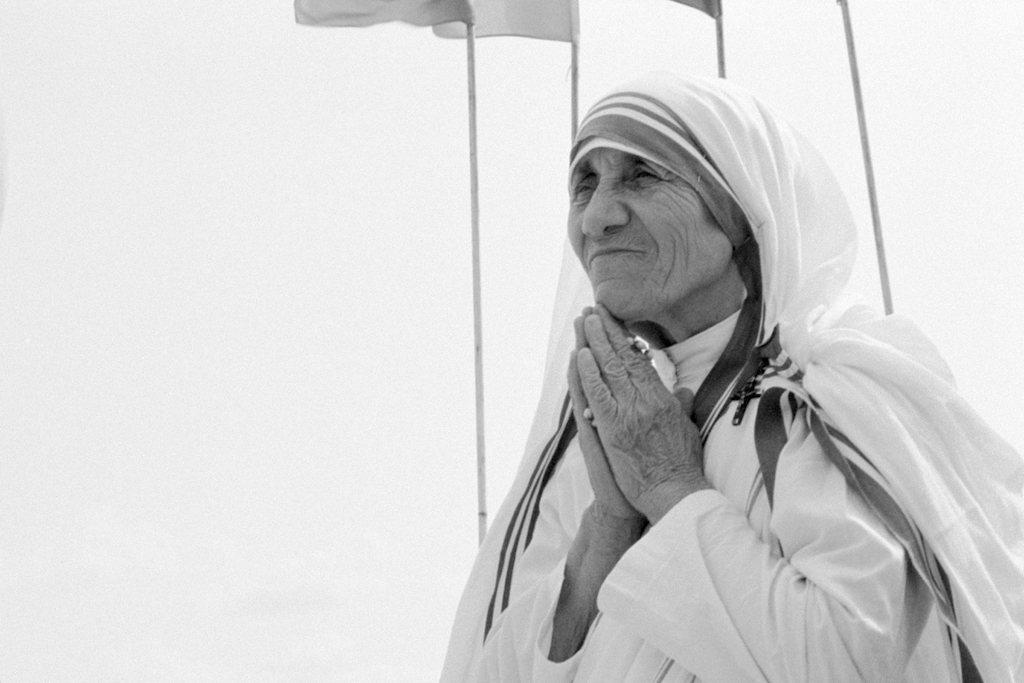The world came to know Mother Teresa very well during her life. With the possible exception of St. John Paul II, she was likely the most recognizable Catholic on the face of the earth in the 20th century. Her faith and the work she and her Sisters did made her beloved and admired by many.
What no one knew (with the exception of a handful of people, mostly priests) until after her death, was the intense spiritual suffering Mother Teresa underwent for most of her life. Often referred to as “the dark night of the soul” (after a book by the same name written by St. John of the Cross), Mother Teresa had no feeling or consolation of the presence of God in her life.
Most of us have had a time in our life when we’ve cried out, “God, where are you??” It may be a time of illness or tragedy, or a time when our faith is tested by hardship. That feeling is but a tiny glimpse of the suffering of Mother Teresa.
She is not the first saint to endure this nor, undoubtedly, will she be the last. She spoke and wrote to perhaps one friend and also her spiritual advisers about this, but she was adamant that her Sisters and the world not know. She never wanted her experience to impact anyone else’s faith, especially her own Sisters. Upon her death, her diary and letters were released, and the world came to know Mother Teresa in an entirely different manner.
In the book Mother Teresa: Come Be My Light, Father Brian Kolodiejchuk, Director of the Mother Teresa Center in California, presents and explores Mother Teresa’s experience. For the most part, Fr. Kolodiejchuk allows Mother Teresa to speak for herself:
The place of God in my soul is blank. There is no God in me. When the pain of longing is so great I just long & long for God and then it is that I feel He does not want me He is not there.
Fr. Kolodiejchuk goes on to say:
The reality of her relationship with Jesus was truly a paradox. He was living in and through her without her being able to savor the sweetness of His presence … it was only when she was with the poor that she perceived His presence vividly. There she felt Him to be so alive and so real. [emphasis added]
A Jesuit priest, Fr. Joseph Neuner, became a confidante and spiritual adviser to Mother Teresa in 1957, a relationship that lasted for decades. It was his guidance that allowed Mother Teresa to come to some peace with this spiritual condition, “a sharing in Christ’s redemptive suffering.” Fr. Neuner, years later, admitted that while this dark night of the soul was not unusual for the holiest of people, he had never found it so deeply in anyone as it existed for Mother Teresa.
Mother Teresa came to see her “darkness” as an identification with the poor she and her Sisters served:
[S]he was drawn mystically into the deep pain they [the poor] experienced as a result of feeling unwanted and rejected and, above all, by living without faith in God.
Mother Teresa, in a letter to Fr. Neuner in 1962, said, “If I ever become a saint I will surely be one of ‘darkness.’ Her faith in Christ, and her absolute reliance on the Eucharist, allowed Mother Teresa to come to a point, spiritually, that she said, “I have come to love the darkness,” not because she loved the feeling that God was absent, but that this suffering allowed her to give herself wholly to the men, women and children that she served every day.
It is unfathomable to most of us how a person whose public face was one of joy and peace, could endure such darkness and still have faith. It is that last part, the steadfastness of Mother Teresa’s faith, under these incomprehensible spiritual conditions, that should and will be her most enduring legacy. As she said to Fr. Neuner in one letter, “You are sad for me but we really have no reason to be sad. He is the Master. He can dispose of me as it pleaseth Him alone.”

